A car seat is the only consumer product required by law in all 50 states, but critics say many of those seats are unnecessarily exposing kids to potentially dangerous chemicals.
Parents don’t currently have the option to buy a car seat without chemical flame retardants, even though experts say there is clear evidence of health concerns and no evidence of a safety benefit in a real-world car fire.
• Click Here To Skip To Resources •
The Backstory:
First, we established that even one of the greenest child car seat manufacturers, who pledged to avoid the most concerning flame retardants, had been unable to keep known cancer-causing retardants out of their car seats.
Then, utilizing biomonitoring, we investigated an apparent link between high levels of a “cancer-causing” flame retardant in a child’s body and the same flame retardant in her car seat.
Next, we revealed that the 44-year-old federal flammability standard, which manufacturers say ostensibly requires chemical flame retardants in car seats, has never even been tested in car seats, and regulators admit that there is no data to indicate the standard provides any real-world safety benefit in car seats.
Finally, we did what the regulators never have and we commissioned combustion tests to gauge the effectiveness of the federally mandated flammability standard in car seats. When ignited side by side, we found that a car seat sample with flame retardants that did meet the federal standard performed worse than an aftermarket car seat cover without flame retardants. However, under the current federal regulations, it would be illegal for manufacturers to sell the aftermarket product without flame retardants.
One of the chemicals commonly used in car seats is known to cause cancer in animals, and another is a suspected endocrine-disruptor that may affect the way our bodies control fat metabolism. Biomonitoring studies preformed across the country have repeatedly found these and other concerning chemicals in children’s bodies, though not necessarily linked to their car seats specifically.
So what does this all mean? Is my kid going to get cancer? Is yours?
It’s important to note that the presence of any one toxic chemical in your body does not necessarily mean you will get cancer. According to toxicologists, the greater concern is the unknown risk of the smorgasbord of chemicals found in our bodies and how they affect us when combined, even in small quantities.
While chemicals in car seats may seem like just one more thing to keep you awake at night, I assure you that the point of our investigation is not to evoke fear (though, as an investigative reporter and a mom, I understand better than most that ignorance is bliss).
The point that many fire scientists, toxicologists, consumer groups and manufactures are trying to make is that, at least in car seats, the chemicals are unnecessary for fire safety but still required by law. They believe parents should have the right to choose to reduce exposure by purchasing a car seat without flame retardants.
While you can not eliminate exposure to concerning chemicals, toxicologists say that reducing exposure can reduce the risk.
The World Health Organization finds nearly 1 in 5 cancers are caused by chemicals and other environmental exposures. As the Environmental Working Group points out, antismoking efforts “have cut the rate of lung cancer by more than 25 percent in the last 25 years.” What if reducing the number of untested and known carcinogenic chemicals in our kids’ environment could do the same for cancer rates overall?
The good news is that Rep. Jared Huffman (D-CA 2nd District) recently introduced legislation that would require regulators to update the flammability standard so that flame retardants would no longer be necessary in car seats.
The bad news is that it doesn’t have any cosponsors, so the House Commerce Committee is unlikely to even review the bill during this session of Congress.
Want to know where your state representatives stand?
See: Toxic Safety: The Lawmaker Response
The best news is that knowledge is power and there are simple things that you can do to reduce exposure. Here are some resources to help guide you until flame-retardant-free car seats are available for sale.
Toxic Safety: Resources
Get Your Foam Tested at Duke
Buy a Car Seat With “Safer” Chemicals
Has Your Manufacturer Been Served With Violations?
Reduce Exposure
Contact Lawmakers With Oversight of NHTSA
Get Your Foam Tested:
You can have the foam in your car seat or furniture tested for free by researchers at Duke University’s Superfund Research Center. The program, launched following a change to California’s flammability standard TB117 in 2013, has really been a game-changer. For the first time, parents can hold manufacturers accountable for what is in their products.
In fact, it was the high number of positive Duke test results posted in the comment section of blogs like Natural Baby Mama that initially tipped me off to the issue late last year. I subsequently began scouring similar blogs and collecting copies of those test results from moms across the country.
For tips on getting your foam (and other products) tested, check out this NewsMom Blog.
A couple of moms have asked how they can physically sample the foam in their car seat without destroying it. I answered one here.
In short, Duke doesn’t need a lot of foam for the test. I used a razor blade to rip the seam in spots I could easily sew back up (as I hoped it would come back negative). I also picked spots away from my daughters face in case it didn’t (i.e. top rear of head rest and under her legs).
Here are still images from the video we shot of me cutting up the seat for the initial test. Only the soft foam sewn into the head rest and fabric (i.e. the car seat cover) came back positive. The hard white outer shell foam did not.
- Seat Fabric
- Head Rest
- 3 Samples
If your car seat tests positive for known cancer-causing chemicals, toxicologists like Dr. Martha Sandy, branch chief of the Reproductive and Cancer Hazard Assessment Branch for California’s Office of Environmental Health Hazard Assessment, advise replacing it with one that does not contain those chemicals. Obviously, that is not a viable option for everyone, and, to be clear, all car seats contain flame retardants of some kind.
Don’t panic. Keep reading for other options to reduce exposure.
Buy a Car Seat With Safer Chemicals:
The Ecology Center publishes an annual technical report (2015 findings below) that publicly lists the flame retardants it finds in a selection of car seats each year.
It is important to note that manufacturers frequently change suppliers and the chemicals in their products can vary greatly from year to year and model to model.
ALSO SEE: Now Our Clek Car Seat Tested Positive For TDCPP
Toxicologists and green scientists also warn that just because a chemical is not yet known to be harmful, it does not mean that chemical is safe. Concerning flame retardants have repeatedly been replaced with new retardants that are also later linked to health concerns. They say the long-term health effects of many chemicals on the market is unknown.
Has Your Manufacturer Been Served With Violations?
You can also check the California Attorney General’s website to see if your manufacturer or retailer has been cited for Prop 65 violations. Prop 65 is a Californian regulation that requires companies provide a warning label on products that contain known cancer-causing chemicals.
Checking the Prop 65 violation database will help you determine if your manufacturer or retailer has served with a notice of violation for using hazardous chemicals.
First, try entering your manufacture’s name in the defendant search box. You may need to try different variations and possible parent companies (i.e. Orbit, Orbit Baby, Ergo Baby, etc.).
Next, try looking up the product by entering the type (i.e. car seat, crib, mattress, tent, etc.) in the source product/search box. You can also try entering the company name there.
Here is a list of miscellaneous children product manufactures and retailers that have been served with violations.
Reduce Exposure:
The Green Science Policy Institute provides some fantastic information on flame retardants in children’s products. From toxicologists to green scientists, everyone seems to agree on a few simple steps to help reduce exposure.
1. Wash your child’s hands when they get out of the car.
A recent bio-monitoring study found that while kids who sucked their thumb tested positive for higher levels of the chemicals in their bodies, hand washing was associated with lower levels.
2. Don’t let kids eat in the car seat.
I know, yeah right. You have to pick your battles.
3. Vacuum your car seat (and car) regularly with a HEPA filter.
4. Clean your car seat.
If your cover is removable, wash it with hot water regularly. If your manufacture says not to use hot water, find out if it’s because it will reduce the effectiveness of flame retardants or impact the crash-worthiness of the car seat. If it’s the former, that is the point. If it’s the later, use cold water or the following alternatives.
If you can’t remove your car seat cover, you can also wipe down your car seat with rubbing alcohol. One chemist recently suggested that heating the car seat by leaving it in the hot sun will open the pores of the foam and release some of the flame retardants. He suggests after heating six or more hours, wipe the car seat down with isopropyl alcohol (rubbing alcohol) to remove the chemicals that have out-gassed.
5. Only use a car seat in the car!!!
This may be the most important advice, as it impacts more than just exposure to chemicals.
The Consumer Product Safety Commission, the American Academy of Pediatrics and many others URGE parents never to let a child sleep in a car seat outside of the car due to increased risk of SIDS. An unbuckled baby can slouch in his car seat, compressing his airway, and suffocate. There have also been several high-profile cases of toddlers in recent years who have been strangled by loose straps.
Many car seats are marketed as stroller seats, but for several reasons—not the least of which is unnecessary exposure to concerning flame retardants—experts say you should simply leave the car seat in the car.
See: “Wake The Baby! Don’t Use Car Seats as Stroller Seats” for details.
Contact Lawmakers With Oversight of NHTSA
“If chemical-conscious moms spent as much time advocating against flame retardants in car seats as they did trying to find one without flame retardants, we wouldn’t be here.” That was the response from Green Science Policy Institute founder Arlene Blum when asked what parents could do about concerning chemicals in car seats.
Since we began reporting on the topic, Rep. Jared Huffman (D-CA 2nd District) introduced legislation that would require NHTSA to update its flammability standard for car seats so that flame retardants would no longer be necessary. The bill was recently introduced into the House Commerce Committee, but members say it is unlikely the bill will even be considered this session of Congress without additional bipartisan cosponsors.
This Change.Org petition, started by the blogger Natural Baby Mama, is calling on lawmakers to pass Huffman’s legislation immediately.
In all, we shared our findings with more than 60 members of Congress who have oversight of NHTSA. So far, none have signed on to support Huffman’s legislation.
You’ll find their responses here: Toxic Safety: The Lawmaker Response
Most importantly, Don’t panic!!!
#StaySane, and remember that car seats save lives. The safest place for a child in a moving vehicle is in a rear-facing car seat in the middle of the back seat.
Learn More
For a summary of the ongoing investigation into chemicals in car seat along with additional resources for parents, links to relevant data & documents, responses from lawmakers and editorials by the reporter, see:
Car Seat Chemicals Continuing Coverage
What began as a NewsMom editorial, expanded into a 6-month KPIX-CBS investigation exposing alleged false advertising, apparent legal loopholes and outdated federal regulations that systematically expose millions of children to concerning, even known-cancer-causing, chemicals in their car seats.
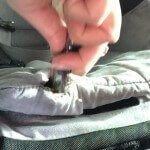
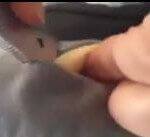
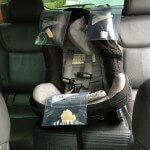
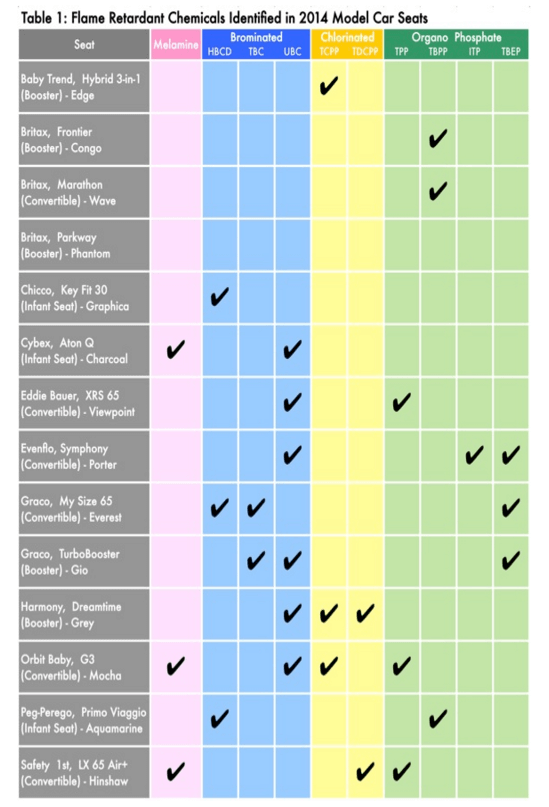
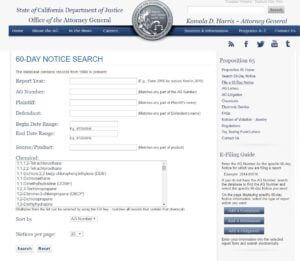

I purchased or it baby almost 4 years ago because I wanted to reduce chemical exposure. Shame on this company! Now the search to find a low chemical option is challenging because the 2014 tested models are no longer available. Any guidance?
I believe the ecology center is coming out with its annual car seat test this fall. The last Britex and Clek ranks near the top. But check the study because chemicals can differ from year to year, model to model. You can’t be sure based on a test of a different model or year.
Here are some NewsMom resources for you and a link to last year’s report. https://newsmom.com/toxic-safety-car-seat-chemicals-continuing-coverage/
6ys8pe
1pjnx9
w5q2g7
m4r1u5
96rg5x
6vd3b8
zm6200
uwtt80
ascueh
c83on2
wu84x3
kdkvz2
7dbq7m
elfkhe
1a5zcl
8dmydf
70rlrt